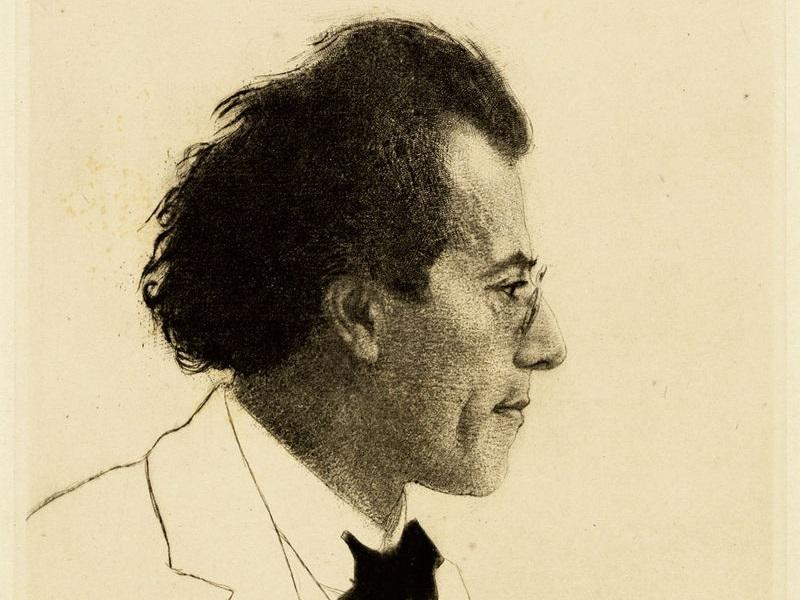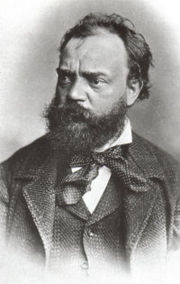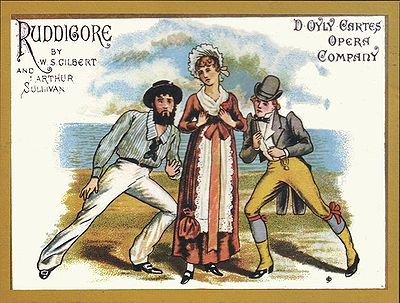
Current Season, Romantic, Solo Vocal, Works
A very personal work, this song cycle by Mahler arose out of his unrequited love for a soprano he had met as a conductor in the Kassel opera house in the mid-1880s. Mahler wrote the text as well as the music, and both are deeply felt. He initially composed these songs for voice and piano, and then orchestrated them in the 1890s. There are four songs, which can be sung by either a mezzo-soprano or baritone.
I – “Wenn mein Schatz Hochzeit macht” (“When My Sweetheart is Married”): He despairs on his beloved’s wedding day.
II – “Ging heut’ Morgen über’s Feld” (“I Went This Morning over the Field”): He finds joy in the midst of nature, birds and greenery. At the end, he questions whether he will ever find happiness.
III – “Ich hab’ ein glühend Messer” (“I Have a Gleaming Knife”): His unrequited love is like the agony of a sharp knife cutting into his chest. He imagines he sees his love’s blonde hair and blue eyes, and hears her laughter – and wishes he were lying dead, on a black bier.
IV – “Die zwei blauen Augen von meinem Schatz” (“The Two Blue Eyes of my Beloved”): Her blue eyes have sent him out into the wide world, away from everything he holds dear. He finds rest and sleep under a blooming linden tree by the side of the road. There everything was fine again – love and sorrow, world and dream.
Mahler used themes from two of these songs (nos. 2 and 4) in his Symphony #1.

20th Century, Current Season, Solo Vocal, Works
Between 1930 and 1945, the Brazilian composer Heitor Villa-Lobos composed a series of nine pieces titled “Bachianas Brasileiras.” Scored for different combinations of instruments and voices, they feature a mix of Brazilian harmonic and rhythmic elements while also reflecting contrapuntal and other baroque, Bachian elements. This Aria is arguably Villa-Lobos best-known work. The lyrics are by Ruth Correa:
In the evening, a dreamy, pretty cloud, slow and transparent, covers outer space with pink. In the infinite the moon rises sweetly, beautifying the evening, like a friendly girl who prepares herself and dreamily makes the evening beautiful. A soul anxious to be pretty shouts to the sky, the land, all of Nature. The birds silence themselves to her complaints, and the sea reflects all of Her [the moon’s] wealth. The gentle light of the moon now awakens the cruel saudade [nostalgic or melancholic longing] that laughs and cries. In the evening, a dreamy, pretty cloud, slow and transparent, covers outer space with pink.
We are performing this moving piece as a memorial to Kurt Behnke, who passed away from Covid-19 early in the pandemic (March 2020). Kurt was an outstanding ‘cellist, member of our orchestra, and good friend to many of us. It is our way of honoring him and all the victims of the pandemic.

Romantic, Solo Vocal, Works
Dvořák composed this work as part of his cycle of “Gypsy Songs” for voice and piano. This song, with its wistful and longing melody, has become famous in its own right. It has been performed in many arrangements, both by singers and instrumentalists. The words were originally set in Czech (sung in our performance today) and German. Here is the English translation (by Natalia Macfarren):
Songs my mother taught me, in the days long vanished;
Seldom from her eyelids were the teardrops banished.
Now I teach my children each melodious measure;
Oft the tears are flowing, oft they flow from my memory’s treasure.
Romantic, Solo Vocal, Works
Fittingly enough for this concert, this next work is from Boito’s opera Mefistofele, a retelling of the Faust legend and his bargain with the devil. In this hauntingly beautiful aria, Faust’s beloved Margherita is in her jail cell and going mad from grief at the supposed loss of her baby and her mother.
Instead of a singer, though, we’re having this aria performed on a Theremin. A theremin is an electronic instrument invented in 1919 by a Russian scientist (Léon Theremin) played by moving both hands around two antennas – one of which determines pitch, and one of which determines loudness – without touching the instrument itself. In the 1950s the theremin was featured in a number of science-fiction movies (such as “The Day the Earth Stood Still”) because of its capability of producing “otherworldly” sounds.
More recently, though, the theremin has been undergoing a revival because of its novelty and expressiveness in performance. It is considered the forerunner of the Moog synthesizer and other electronic instruments in use today.

20th Century, Solo Vocal, Works
This song is taken from the Gilbert and Sullivan operetta Ruddigore, or the Witch’s Curse. This delightful operetta features (among other things) a roomful of portraits of ghostly noble ancestors – who actually step out of their picture frames and come to life! The song that follows – “When the night wind howls” – is sung by the lead ghost (Sir Roderic Murgatroyd). It describes ghostly revels amidst the graveyard “at midnight – “the dead of the night’s high noon.”
20th Century, Solo Vocal, Works
This extraordinary work was composed for tenor Peter Pears and horn player Dennis Brain in 1943. It consists of six songs set to English poems framed by a solo horn prologue and epilogue. While many of the poems deal in some fashion with sleep, decay, or death, each has its own distinct character, beautifully set off by the interplay between the two soloists and the strings.
The Pastoral (“The Day’s grown old”) by Cotton describes a late afternoon scene in the countryside with flocks of sheep, lengthening shadows and sunset. “The splendour falls on castle walls” (“Blow Bugle Blow”) by Tennyson evokes the heroics of a bygone age, with bugle calls echoing and dying in a craggy landscape.
For Blake’s doleful Elegy (on its face, about a rose and its destruction by the worm that finds it), Britten has composed horn and tenor melodies based on minor second motifs. It leads directly into the Dirge, a haunting 15th-century anonymous poem about death and whether salvation or damnation awaits the deceased, depending on his/her conduct in life. The Dirge is also notable for its structure, a multi-voiced fugue played by the strings and horn over an ostinato sung by the tenor.
Ben Jonson’s hymn to Diana the huntress is set as a spritely hunting tune, while Keats’ Sonnet (“O soft embalmer of the night”) is a paean to sleep.
20th Century, Solo Vocal, Works
Barber set this masterpiece to a poem by American author James Agee (1909-1955). Knoxville was first performed in 1948 by soprano Eleanor Steber with the Boston Symphony Orchestra under the direction of Serge Koussevitsky.
It evokes a summer evening in the backyard of a southern town, as seen through the eyes of a small child. It starts out calmly. The main motive of several falling and rising notes appears in the solo winds (oboe, clarinet and bassoon) in the first few measures. This transitions to a wistful, poignant depiction of the scene – people rocking on porches, talking about everyday things, looking at people and buggies going by in the street.
The agitated middle section starts abruptly – a vivid depiction of “a streetcar raising its iron moan; stopping; belling and starting, stertorous …” After the streetcar fades into the distance, the scene and music revert to the backyard scene – calm again at first, then more urgent as the child’s thoughts turn to the family, life and living, and her place in the world.
20th Century, Solo Vocal, Works
The El Amor is de Falla’s best-known work, and contains his most recognizable music. He originally composed it in 1915 to accompany a two-act theatrical ballet, complete with narration, dance and song. De Falla later transformed the work into an orchestral suite interspersed with songs which keep the essence of the original ballet.
The plot centers on a gypsy girl, Candelas. While mourning her dead (but faithless) husband, she has fallen in love with Carmelo, a handsome gypsy youth. Unfortunately for Candelas, her dead husband comes back from the grave to haunt her and prevent her from consummating her love with Carmelo. With the help of her friend, Lucia, Candelas devises a ruse to trick the specter. Outwitted, the specter loses his fight, enabling Candelas and Carmelo to exchange the kiss of perfect love.
The piece is divided into ten separate sections each describing parts of the story. It combines Andalusian and flamenco motifs into a work at once lyric, mystical, and powerful. The “Ritual Fire Dance” (#5) is the most famous of the ten sections. The songs describe, in turn, Candelas’ mixed feelings of love and sorrow for her dead husband (#2); the fickleness of love, which is compared to a “will-o’-the-wisp” (#7); Candelas reproaching her dead husband, who did not merit her love (#9); and her final triumph amid the pealing bells of daybreak (#10).
Romantic, Solo Vocal, Works
Mozart composed this opera aria in 1776. The text, taken from the opera Arsace, describes the bitter parting of two lovers who wonder if they will ever see each other again. The aria is composed in rondo form, with words of tender farewell sung in the slower tempo and words of despair (railing against cruel fate) sung in the faster sections.




